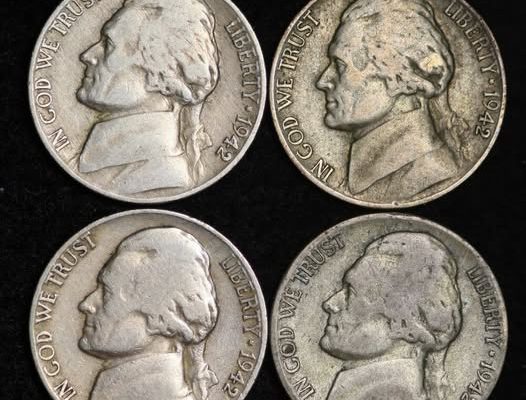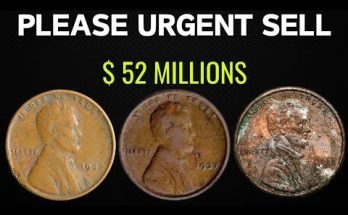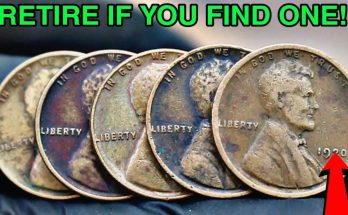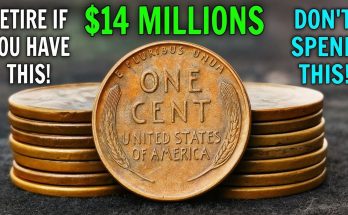A Glimpse into American Wartime History: The Distinctive Wartime Nickels
The accompanying photograph showcases four remarkable examples of “Wartime Nickels,” coins that serve as tangible relics of a pivotal period in American history. Minted from 1942 to 1945, these unique coins were a direct response to the critical metal shortages faced by the United States during World War II. With nickel being a vital strategic metal for the war effort, the U.S. Mint ingeniously altered the composition of the five-cent coin, leading to the creation of these distinctive pieces.
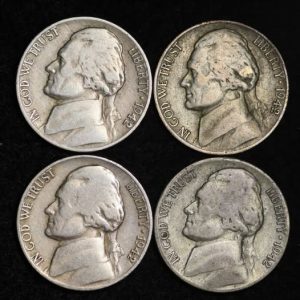
Unlike their traditional counterparts, Wartime Nickels are composed of a special silver alloy, consisting of 35% silver, 56% copper, and 9% manganese. This significant change in metallic content makes them particularly sought after by collectors, not only for their historical significance but also for their intrinsic silver value.
A key identifying feature of these wartime issues, clearly visible on the reverse side (though not shown in this specific image, it’s a crucial detail for collectors), is the prominent mint mark placed above Monticello. This large mint mark, whether “P” for Philadelphia, “D” for Denver, or “S” for San Francisco, distinguishes them from all other Jefferson Nickels. Prior to this, the Philadelphia Mint did not use a mint mark on nickels, and other mint marks were typically much smaller and located differently.

These coins are more than just currency; they are a fascinating piece of American wartime heritage. Each “Wartime Nickel” tells a story of national resourcefulness and sacrifice during a time of global conflict. Collectors and history enthusiasts alike prize them for their unique composition, their historical context, and the remarkable narrative they carry. They stand as a shining reminder of the ingenuity employed on the home front to support the war abroad. Truly, a fascinating piece of American wartime heritage! ⚔️💎
